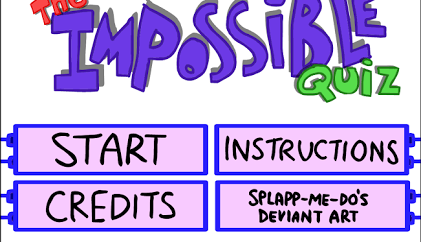Lock the Rhythm — Break the Tape
Master tap timing to launch, hurdle, and anchor relays. Chase PBs with ghost rivals, smooth baton passes, and stamina strategy across 100–800m events.
Keep exploring
Keep your night shift energy up with more browser horror, tense escape rooms, and quick palate cleansers we trust.

Rocket-Packed Kart Battles in Your Browser
Rocket-Packed Kart Battles in Your Browser

Untime
Untime

All elemental shrines in one seamless quest
All elemental shrines in one seamless quest

Dodge traps, read twice, and outwit the quiz that cheats back
Dodge traps, read twice, and outwit the quiz that cheats back

Turn dominoes into a daily deduction ritual
Turn dominoes into a daily deduction ritual

Beat Verification at Arcade Speed
Beat Verification at Arcade Speed

Play BLOODMONEY2 in your browser
Play BLOODMONEY2 in your browser

Drift, tune, and rule the neon streets
Drift, tune, and rule the neon streets

Dino Game — Sprint, Jump, Repeat
Dino Game — Sprint, Jump, Repeat

The Captcha Game
The Captcha Game
Rhythm-Fueled Track & Field In Your Browser
Run on feel, win on timing
This browser track experience turns every race into a small rhythm puzzle. Acceleration, top speed, and clean form all come from alternating inputs at a steady cadence. When you find that internal metronome, your runner surges forward with silky footstrikes; drift off-beat and you can almost feel the shoes scrape the track as momentum slips away. No long tutorial walls, no confusing skill trees—just simple controls with surprising depth that reward calm, consistent timing.
From explosive 100-meter bursts to lung-burning 800-meter tactics, each event asks for a slightly different beat. Hurdle races add precision jumps that must be triggered on a particular count, while relays demand perfectly timed exchanges so speed passes from one sprinter to the next without a stutter. You’ll learn to read the track lines, listen to your own tempo, and commit to a cadence that carries you through the finish banner.
How the core input loop works
The control scheme is deliberately minimal: alternate two keys or taps to generate stride cycles. The steadier the alternation, the cleaner the form meter and the faster you go. Hammering wildly rarely helps—what matters is consistency. When the interface cues a hurdle, slip a jump tap right as the takeoff mark approaches, then land back into rhythm without overcorrecting. For baton exchanges, begin your acceleration a breath early, line up the handoff zone, and press at exactly the moment the exchange window opens to keep velocity flowing.
Events and what they emphasize
100m Dash: It’s all about the start and an error-free cadence to top speed. Nail the first ten meters by ramping from quick, shallow steps to your max rhythm, then hold it without panic when a ghost opponent edges alongside.
400m and 800m: These races add pacing layers. Your stride should relax slightly on curves, then lengthen on the back straight. Overstride too early and your form meter wobbles; wait too long and you leave seconds on the table. The final 100 meters become a conversation between fatigue and discipline—keep the beat even as the mental pressure spikes.
Hurdles: Jumps happen on a beat, not a guess. Approach each barrier with a micro-count in your head—tap-tap-tap-jump—so you skim the hurdle and touch down in perfect sync. Clipping a barrier costs more than you think, not just in time but in broken cadence.
Relays: Team events add choreography. The outgoing runner must hit stride as the incoming teammate barrels into the zone. Your job is to overlap rhythms and execute a clean pass so pace never stalls. A beautiful handoff feels like one continuous sprint shared by four athletes.
Tech that rewards patience
Under the hood, the movement model favors steady inputs over frantic spam. A visible or implied rhythm indicator helps you sense when you’re drifting fast or slow. Small errors are recoverable—tap gently back into tempo and the speed graph smooths out. Big mistakes still have counterplay: settle the cadence within two or three cycles, then build again instead of mashing harder. That feedback loop makes races feel fair and teaches you to trust timing rather than button speed.
Practical tips for faster times
- Start on a half-beat: Don’t explode into redline on the very first step. Build to max cadence over the first 15–20 meters; you’ll reach peak velocity with better stability.
- Count strides between hurdles: Pick a consistent number—say three or four taps—so takeoffs always happen at the same foot. Consistency beats last-second reactions.
- Relax on corners: In 400/800, ease one notch on bends, then lengthen again on the straights. You’ll conserve form and finish with a stronger final 60 meters.
- Watch the handoff zone: In relays, begin accelerating a fraction before the exchange window and meet the baton at speed. Early or late taps turn a fast leg into an average one.
- Use ghosts smartly: Load a rival with a time just faster than your PB. Draft their rhythm visually and aim to edge ahead in the last 20 meters.
Why ghost rivals matter
Racing a translucent opponent transforms practice into competition. A ghost’s steady pace exposes where your cadence wobbles, and its clean hurdle form shows exactly how much a clipped barrier costs. Beat the ghost by a hair, set a new personal best, and immediately queue another run with a slightly faster target. That loop—run, learn, adjust, repeat—drives progression without grind or gimmicks.
Short sessions, real mastery
Each attempt lasts a minute or less, which makes it perfect for quick sessions. Yet there’s long-term mastery hiding in plain sight: a smoother start sequence, a cleaner hurdle rhythm, a braver final-straight cadence. Over time you’ll internalize the beat so deeply that your fingers tap in time before the gun even fires. That fusion of simplicity and skill ceiling is what keeps players returning for just one more run.
Accessibility and comfort
Because inputs are rhythm-based rather than reaction-spam, the game is friendly to many setups. You can tap with two fingers on a trackpad, alternate keys on a keyboard, or use a pair of face buttons on a controller. Visual lanes and spacing lines reduce guesswork for hurdle takeoffs. If your hands tire, shorten sessions—consistency suffers when you tense up. A calm posture and light taps usually produce the best splits.
Learning without a wall of text
The first races teach fundamentals organically. The UI hints at cadence quality, hurdle windows, and exchange timing through color and animation. Instead of memorizing charts, you gather understanding from feel. After a few tries, you’ll notice your eyes switching from the runner to the rhythm cues and back again, letting peripheral vision handle spacing while your hands keep time.
From novice to negative splits
Early on, accept small mistakes and aim for clean mid-race sections. As PBs shrink, refine micro-skills: breathing on straights, relaxed shoulders, and planned surge points. In hurdle events, pre-plan the stride count for the first half and adjust if wind or nerves nudge you off pattern. In relays, commit to handoff tempos—once you choose a count-in, trust it.
Mindset for clutch finishes
Close races are won by holding rhythm when pressure peaks. Don’t chase with frantic taps; stay faithful to the beat and you’ll claw back centimeters. Think of the final meters as a musical crescendo—same tempo, slightly stronger intent. The clock rewards discipline.
Why it clicks for competitive players
Speedrunning fans will recognize the appeal: short attempts, precise execution, instant restarts, and a measurable path to improvement. There’s enough randomness to keep runs lively—tiny cadence drifts, different ghost targets—but not so much that times feel luck-based. It’s a game where you can sense progress within minutes and still shave hundredths after hours.
Who should play
If you enjoy tight control loops, lean design, and the satisfaction of a perfect input string, this track title delivers. It’s ideal for quick competitive breaks, warm-ups before other games, or focused practice sessions where you hunt a new personal best. Athletes and rhythm-game fans alike will appreciate how timing translates into speed, how smooth exchanges feel like choreography, and how a clean hurdle cadence sings across the back straight.
Final lap
Find your tempo, trust your form, and let each tap carry you forward. With ghost rivals to chase, clear feedback on cadence, and event variants that test different aspects of timing, there’s always another fraction to save. Line up in the blocks, breathe, and tap into the groove—the finish tape is waiting.
Share Lock the Rhythm — Break the Tape
Spread the word, invite friends, or bookmark this page to revisit the story whenever you need it.